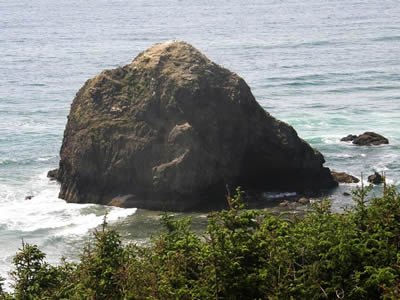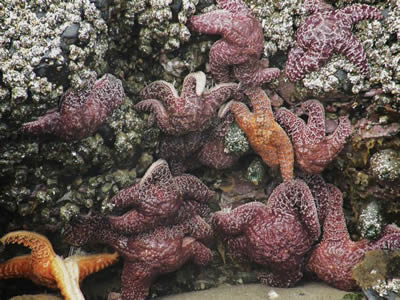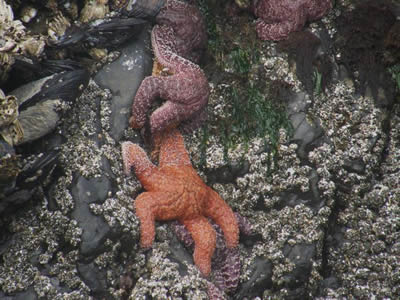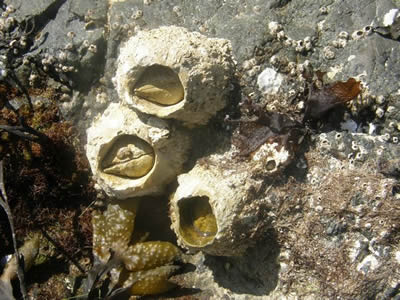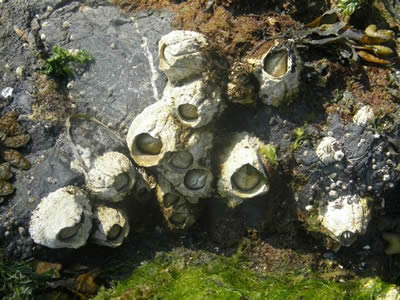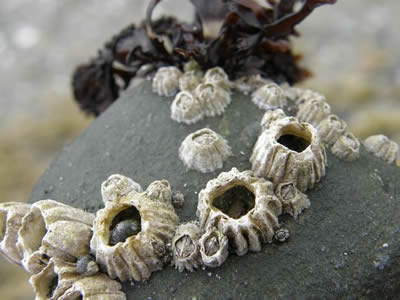| Dereila Nature Inn > Lagoon Trail > Marine Life Guides, Articles, Trivia and More! > In the Paths of Tides |
| |
In the Paths of Tides |
With the rolling in and out of the tides, and the strength of the wind and rain during winter storms, many coasts are dotted with fascinating structures and rocky islands that are the result of thousands of years of buffeting and battering. |
| |
These mammoth monolith structures attract a multitude of species of birds as they porvide a haven relatively safe from predators. Here they can can rest and nest. |
| | |
 |
On the larger or higher islands, a few trees find the space to grow. Although they may never attain great heights, they add a little beauty to the bare rock. |
| | |
|
__ |
 |
As the tide recedes during the summer season of low tides, we are able to observe a few of the animals that would be otherwise safely hidden from view in rocky crevices and hollows. |
| | |
 |
As we leave the water with the Pigeon Guillemots putting on a show, we go exploring amongst the rocks and tidal pools. |
| | |
.JPG) |
The Ochre Sea Star, Pisaster ochraceus, comes in many colours ranging from orange to brown to purple. It is one of the most common sea stars. Sea stars are closely related to sea urchins. |
| |
|
| |
|
__ |
|
Sea stars, sometimes called Starfish, do not have rigid skeletons but a tough, thick skin which offers protection. They can withstand each other's company and can be found in huge numbers feeding on mussels and clams. |
| | |
|
|
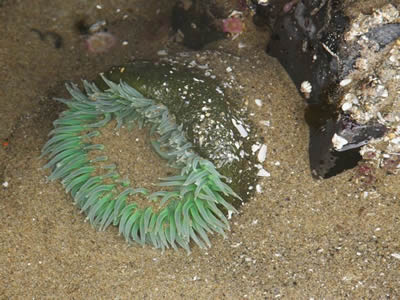 |
|
The Green Anemone, Anthopleura xanthogrammica, lives in the tide pools along exposed shores.
There may be many close together but are not aggressive towards each other.
The tentacles are poisonous and the Green Anemone uses its poison to paralyze its food which includes mussels, sea urchins as well as small fish and crabs. |
| |
|
|
|
|
|
|
There are numerous species of barnacles such as these Giant Acorn Barnacles, Balanus nubilus, found on the low tide mark of open coasts where they adhere to rocks and hard surfaces. They grow in bunches and even on top of each other, forming huge masses that are frequently broken off in storms. |
| |
|
|
|
|
|
|
Another barnacle is the much smaller Acorn Barnacle, Balanus glandula. As adults they live in huge colonies, attaching themselves to any hard surface like rocks, pebbles, pilings and boats. The common name comes from the shape of the hard calcareous plates that protect its body. Like all barnacles, Acorn Barnacles feed on microscopic plants and animals. |
|
| |
|
| |
|
| |
|
|
|




